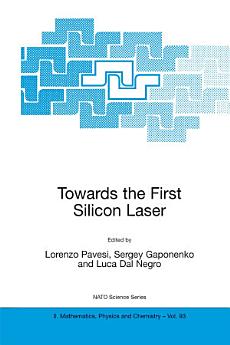Towards the First Silicon Laser
Lorenzo Pavesi · Sergey Gaponenko · Luca Dal Negro
ธ.ค. 2012 · NATO Science Series II: Mathematics, Physics and Chemistry หนังสือเล่มที่ 93 · Springer Science & Business Media
eBook
482
หน้า
reportคะแนนและรีวิวไม่ได้รับการตรวจสอบยืนยัน ดูข้อมูลเพิ่มเติม
เกี่ยวกับ eBook เล่มนี้
Silicon, the leading material in microelectronics during the last four decades, also promises to be the key material in the future. Despite many claims that silicon technology has reached fundamental limits, the performance of silicon microelectronics continues to improve steadily. The same holds for almost all the applications for which Si was considered to be unsuitable. The main exception to this positive trend is the silicon laser, which has not been demonstrated to date. The main reason for this comes from a fundamental limitation related to the indirect nature of the Si band-gap. In the recent past, many different approaches have been taken to achieve this goal: dislocated silicon, extremely pure silicon, silicon nanocrystals, porous silicon, Er doped Si-Ge, SiGe alloys and multiquantum wells, SiGe quantum dots, SiGe quantum cascade structures, shallow impurity centers in silicon and Er doped silicon. All of these are abundantly illustrated in the present book.
ให้คะแนน eBook นี้
แสดงความเห็นของคุณให้เรารับรู้
ข้อมูลในการอ่าน
สมาร์ทโฟนและแท็บเล็ต
ติดตั้งแอป Google Play Books สำหรับ Android และ iPad/iPhone แอปจะซิงค์โดยอัตโนมัติกับบัญชีของคุณ และช่วยให้คุณอ่านแบบออนไลน์หรือออฟไลน์ได้ทุกที่
แล็ปท็อปและคอมพิวเตอร์
คุณฟังหนังสือเสียงที่ซื้อจาก Google Play โดยใช้เว็บเบราว์เซอร์ในคอมพิวเตอร์ได้
eReader และอุปกรณ์อื่นๆ
หากต้องการอ่านบนอุปกรณ์ e-ink เช่น Kobo eReader คุณจะต้องดาวน์โหลดและโอนไฟล์ไปยังอุปกรณ์ของคุณ โปรดทำตามวิธีการอย่างละเอียดในศูนย์ช่วยเหลือเพื่อโอนไฟล์ไปยัง eReader ที่รองรับ








